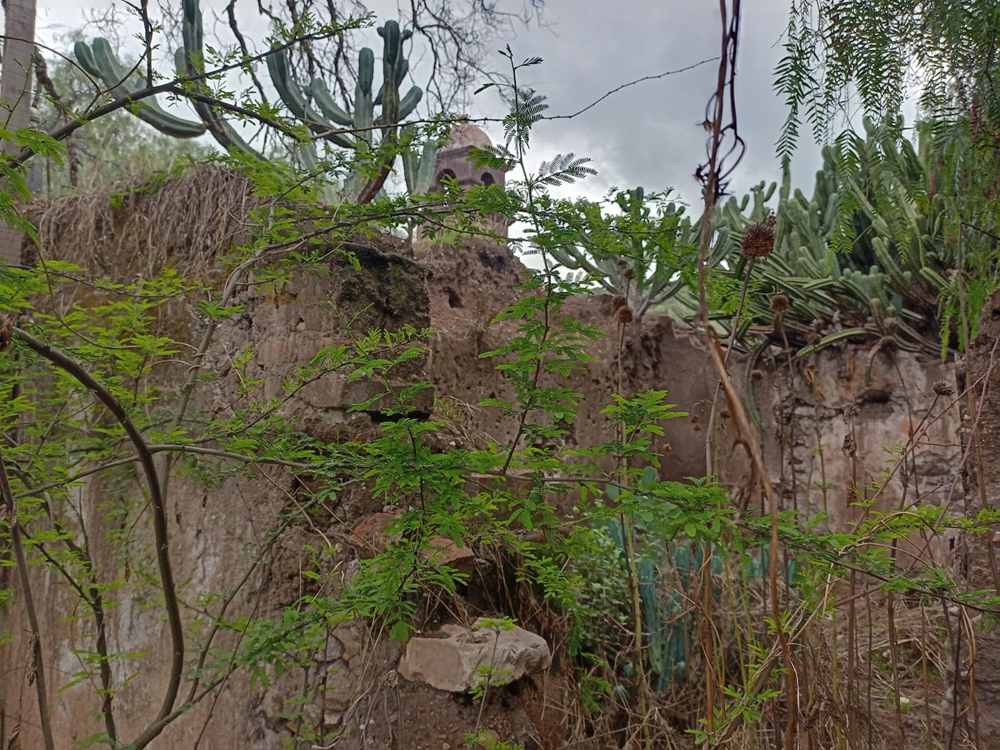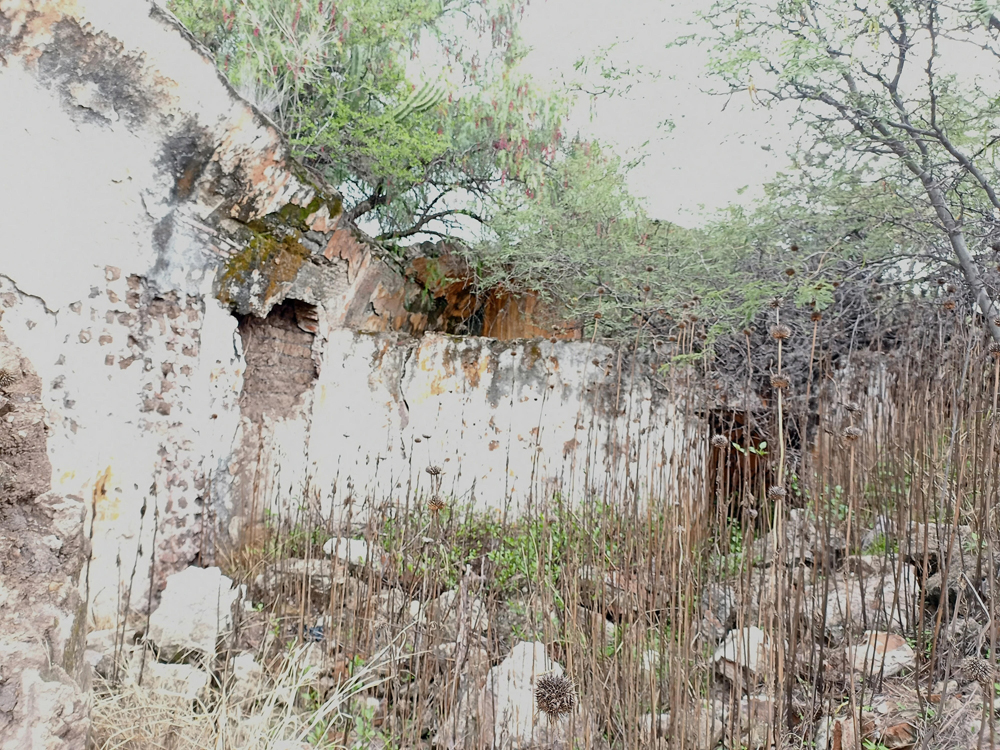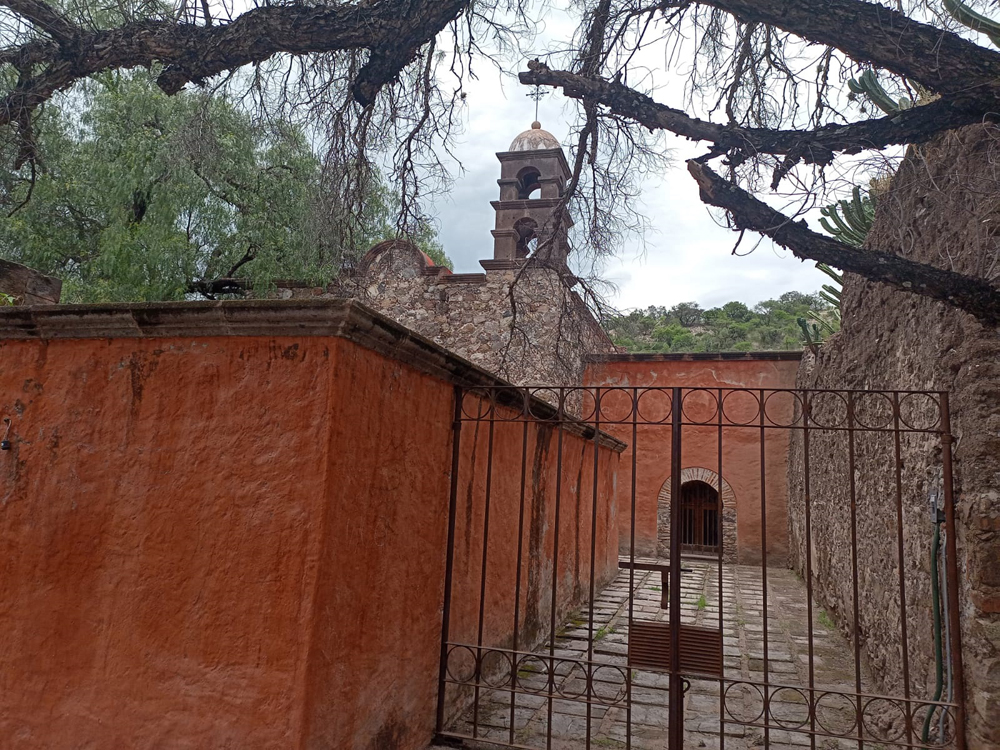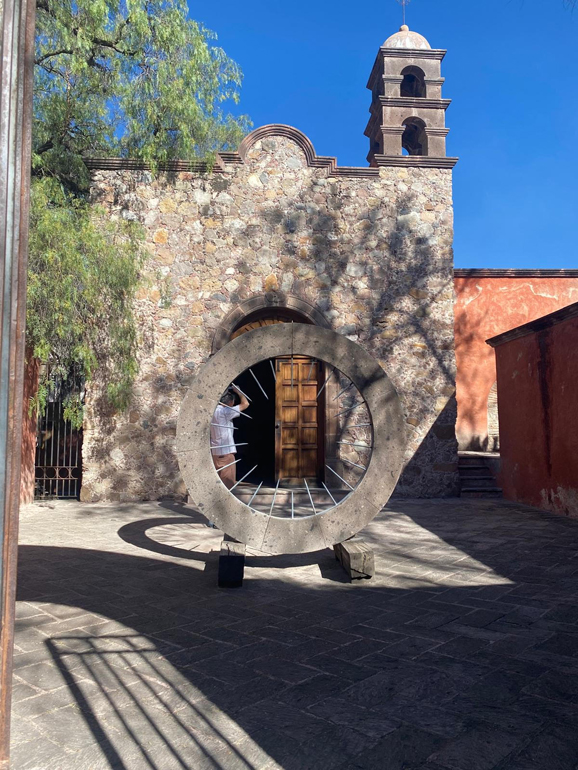 Español
Español
July 20, 2025
by James Akers
I feel at home here, an expat with no automobile, moto, not even a bici. Although an unused Mexican driver's license still rests easily in my back pocket, just in case. Due to my lack of wheels there's quite a lot of walking involved with me, but I really don't mind. I'm able to see things that visiting Chilangos often miss, ever circling in their shiny cars, burning gas, waiting for a parking space to somehow appear. I do enjoy being out and about, seeing things up close and not through a slow-moving window.
I notice things when I'm walking. In some of the less foot-traveled, rough and tumbled down places, for example, in the not yet transformed parts of the Obraje, there are a lot of really old things lying around: slanted weathered walls bracing themselves at odd angles; unrecognizable fragments of former architecture poking out this way and that, partially hidden from view. Observing these I find myself breathing a little slower, wondering what it must have been like back then.
Back in the 18th century, and bordering what is now Centro, Hacienda de Santa Maria del Obraje contained a small vibrant laboring community, which for a time worked in support of a busy wool textile manufacturing industry. (This prior to the early 20th century's, also textile-oriented Fábrica de la Aurora.) Way back then, there existed large and small stone and adobe trojes (barns), warehouses, and workshops assisting with the working and maintenance of materials and tools for the necessary processing of simple elements of fiber into fabric: cleaning, carding/combing, spinning and weaving on large manual looms.

At the center of this vigorous hub of long hours as long as there was daylight, stood the original Capilla San José. The chapel was built by and for the workers and their families living in nearby homes with just enough room adjoining for a night's rest to any weary traveling priest who might stop to celebrate an intermittent mass, baptism, or occasional marriage for the local faithful. The chapel had stood a long time, maybe predating the 1746 arrival of Baltazar Sautto y Villachica, one of the earliest successful farmers/businessmen to arrive in San Miguel and this particularly beautiful area against our northeast hills.
In years not so very recent, Obraje's important past had become but a memory for the few who had now faint family recollection, stories being passed from one generation to a younger. There were no cloudy remembrances for me, instead a guessing game. The many years of the workingman's hearty industry had stopped and turned derelict; no longer needed; for the most part forgotten, broken, dry boned; a lot like that ancient prophet Ezekiel and his penchant for visions of dusty worn out, dead places; once sturdy walls, window casings and doorways fallen to ruin with roofs no more, choked within forests of tangled weeds.
Then a man of 21st century San Miguel, an entrepreneur, a businessman, an accomplished visionary, Señor Pablo Rodriguez, walked along that narrow ribbon of a back road that I was now walking. He looked from right to left and saw what others had not yet seen, the dry bones of what once was, come to life. He had a vision of community, of beauty and relaxation, of splendid culture, in this site of former hot, sweaty toil.

With the help of some of the best architects and historic restoration designers Pablo Rodriguez's vision came to pass. Now the Obraje contains a cultural center and adjoining amphitheater, an award-winning hotel, fine indoor/outdoor eating establishments, and a rejuvenated, strengthened, beautified presa, the wetlands of the Arroyo de las Cachinches surrounded by a natural flora and fauna refuge.
And the capilla itself has also been brought back from physical oblivion. It stood until very recently, beautifully restored and empty, except for an infrequent celebration reverberating against the wood ceiling beams. Nothing more. That is, until a young English/Mexican couple, out scouting for suitable space for an embryonic Christian fellowship start-up were walking along noticed the chapel.
There on the roadway close to Hotel Live Aqua, they asked the nearby parking attendant what he knew of the sheltered place hiding behind the locked gate and traditional brown walls. "I don't know anything about it," responded the valet, "but the owner is standing right over there. You can ask him."

Thus began the fulfillment of what is now a robust Christian worship center. Saint Mary & Joseph's Chapel has services for both English and Spanish speakers, and now has a temporary minister/priest, along with his talented wife, with the support of the bishop of the Anglican Church in North America's Diocese of the Southwest.
The chapel is wonderfully open and alive again. New parishioners from all paths of life and religious backgrounds have been stepping inside, filling the sacred space with worship after many absent years, seemingly fulfilling Ezekial's old prophecy if just for our small part of the world:
